They get "potted up" about mid-April each year for the next years growth.
They are beautiful foliage plants that prosper both in planters or in ground. It would seem I don't have a nice image of the lovely deep red underside of the leaves. They are much sturdier than regular tuberous begonias, so withstand the rigors of weather a bit better.
They bloom late in the season and continue to be beautiful until a hard frost. we often dig them before that hard frost has happened.
Our supply of B. grandis started off with only one or two little tubers that Bill got from Cruikshanks back in the day. There has been quite a bit of multiplication, so we now have many.
About 2004, we discovered a very large number of little bulbils on the plants leaf axils when we were harvesting the tubers in late fall. We decided to see if they could be grown.
The little bulbils were "sown" in medium and kept just slightly damp for a few weeks. Expecting they would typically get a cold period, we packed the packs in plastic and put them in the fridge for the winter.
The packs were brought out in early spring, put under lights and in a short time little sprouts appeared. These grew into small tuberous plants which made significant growth by the end of that summer.
They were harvested and stored the same as the bigger tubers and the next year, were blooming size.
Last fall (2012) there were an inordinate number of bulbils formed, so I thought I would save some and list them in the ARHS Seed Exchange. The many bulbils were put in three packs of mix and treated as before. Some were shipped off packed in a bit of medium for orders received. Many were left and the packs were taken from the fridge March 14th. Growth started to appear about two weeks later.
They have grown very fast and were transplanted to 4-cell packs April 8th.
This is the storage pack popped out to show the roots profile before separating them into individual little plants.
They were very easy to handle and came apart with very little apparent disturbance.
It would appear there are sixteen packs plus a couple of small packs with some tiny remnants.
That prompted me to check the stored tubers from last year which were in the cold room in a box. All were showing a small sprout, so they will need to be potted up in a few days.
I usually put the larger tubers in 3" pots, the medium ones in a propagating tray and the tiny ones in 4-cell packs. They get planted with the sprout just showing, but with room for them to have a greater amount of mix added to increase their planting depth. They are put about 5-6 " deep when planted outside.
We try get some sold at our annual Plant Sale, many are planted , and some are just given to friends or neighbors. Being a rather unknown plant, it takes some degree of public relations.
A bit of an update from late April. The little plants have grown beautifully.
Even the two packs with so-called scraps are full of growth.
If anything, we may have too many of these lovely plants. I have kept a count (more or less) and there are from the old tubers thirty six 3" pots, two trays with 24 per tray and sixteen 4-cell packs (56). Add in the ~64 little guys and it gives a large number.
I have been trying to find out if there are other sources for B. grandis here in Canada, but haven't found any. Several places in the United States list them and there are one or two seed sources.
They are beautiful foliage plants that prosper both in planters or in ground. It would seem I don't have a nice image of the lovely deep red underside of the leaves. They are much sturdier than regular tuberous begonias, so withstand the rigors of weather a bit better.
They bloom late in the season and continue to be beautiful until a hard frost. we often dig them before that hard frost has happened.
Our supply of B. grandis started off with only one or two little tubers that Bill got from Cruikshanks back in the day. There has been quite a bit of multiplication, so we now have many.
About 2004, we discovered a very large number of little bulbils on the plants leaf axils when we were harvesting the tubers in late fall. We decided to see if they could be grown.
The little bulbils were "sown" in medium and kept just slightly damp for a few weeks. Expecting they would typically get a cold period, we packed the packs in plastic and put them in the fridge for the winter.
The packs were brought out in early spring, put under lights and in a short time little sprouts appeared. These grew into small tuberous plants which made significant growth by the end of that summer.
They were harvested and stored the same as the bigger tubers and the next year, were blooming size.
Last fall (2012) there were an inordinate number of bulbils formed, so I thought I would save some and list them in the ARHS Seed Exchange. The many bulbils were put in three packs of mix and treated as before. Some were shipped off packed in a bit of medium for orders received. Many were left and the packs were taken from the fridge March 14th. Growth started to appear about two weeks later.
They have grown very fast and were transplanted to 4-cell packs April 8th.
This is the storage pack popped out to show the roots profile before separating them into individual little plants.
They were very easy to handle and came apart with very little apparent disturbance.
It would appear there are sixteen packs plus a couple of small packs with some tiny remnants.
That prompted me to check the stored tubers from last year which were in the cold room in a box. All were showing a small sprout, so they will need to be potted up in a few days.
I usually put the larger tubers in 3" pots, the medium ones in a propagating tray and the tiny ones in 4-cell packs. They get planted with the sprout just showing, but with room for them to have a greater amount of mix added to increase their planting depth. They are put about 5-6 " deep when planted outside.
A bit of an update from late April. The little plants have grown beautifully.
Even the two packs with so-called scraps are full of growth.
If anything, we may have too many of these lovely plants. I have kept a count (more or less) and there are from the old tubers thirty six 3" pots, two trays with 24 per tray and sixteen 4-cell packs (56). Add in the ~64 little guys and it gives a large number.
I have been trying to find out if there are other sources for B. grandis here in Canada, but haven't found any. Several places in the United States list them and there are one or two seed sources.
_zps74861206.jpg)
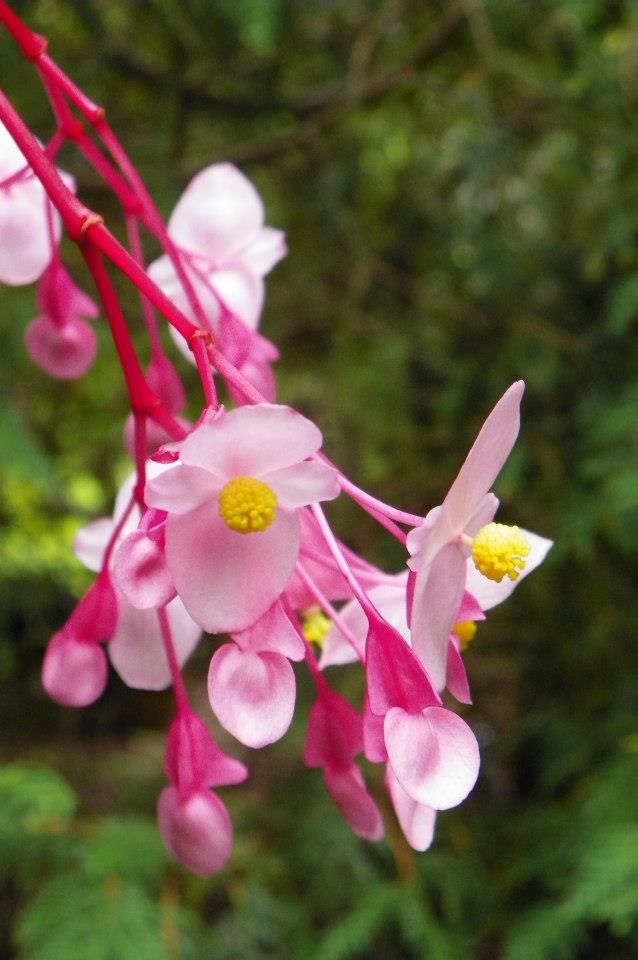
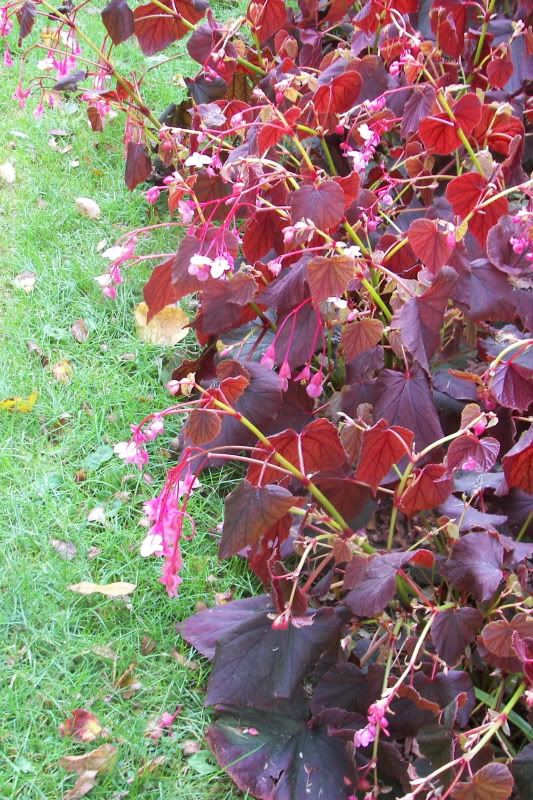
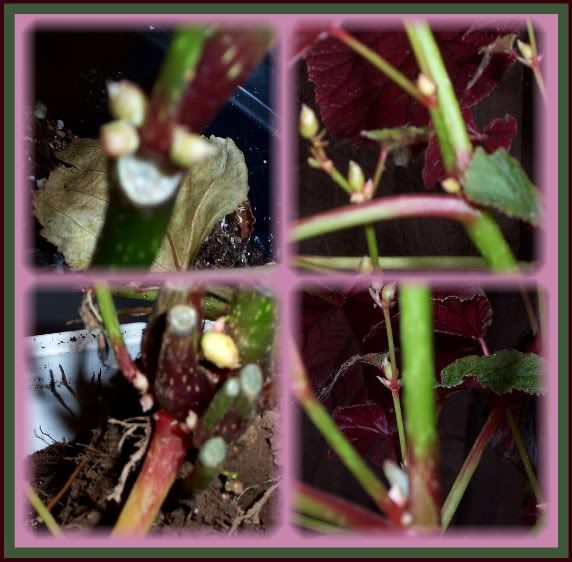
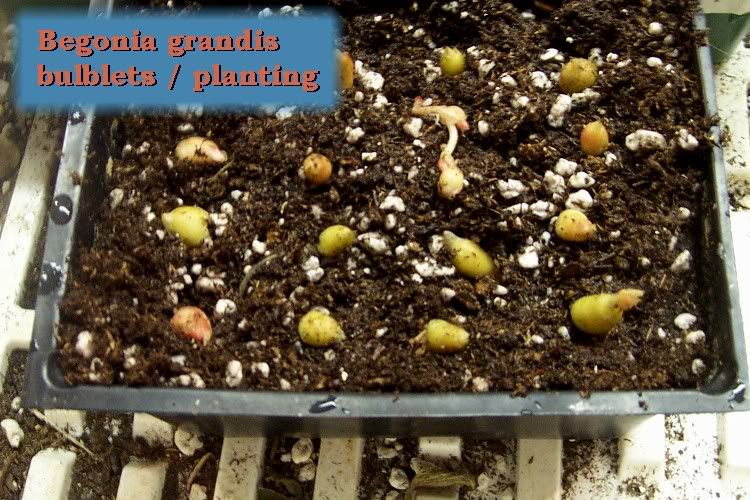
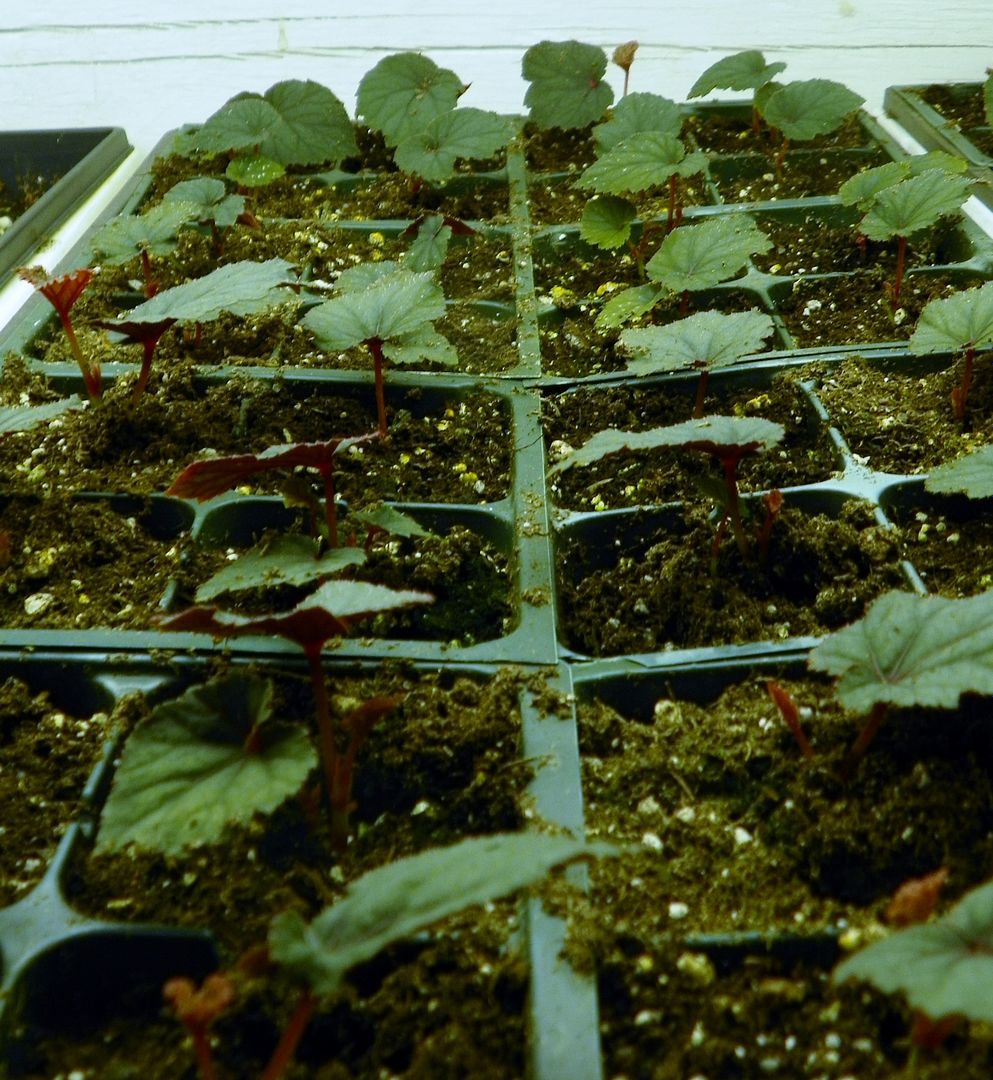
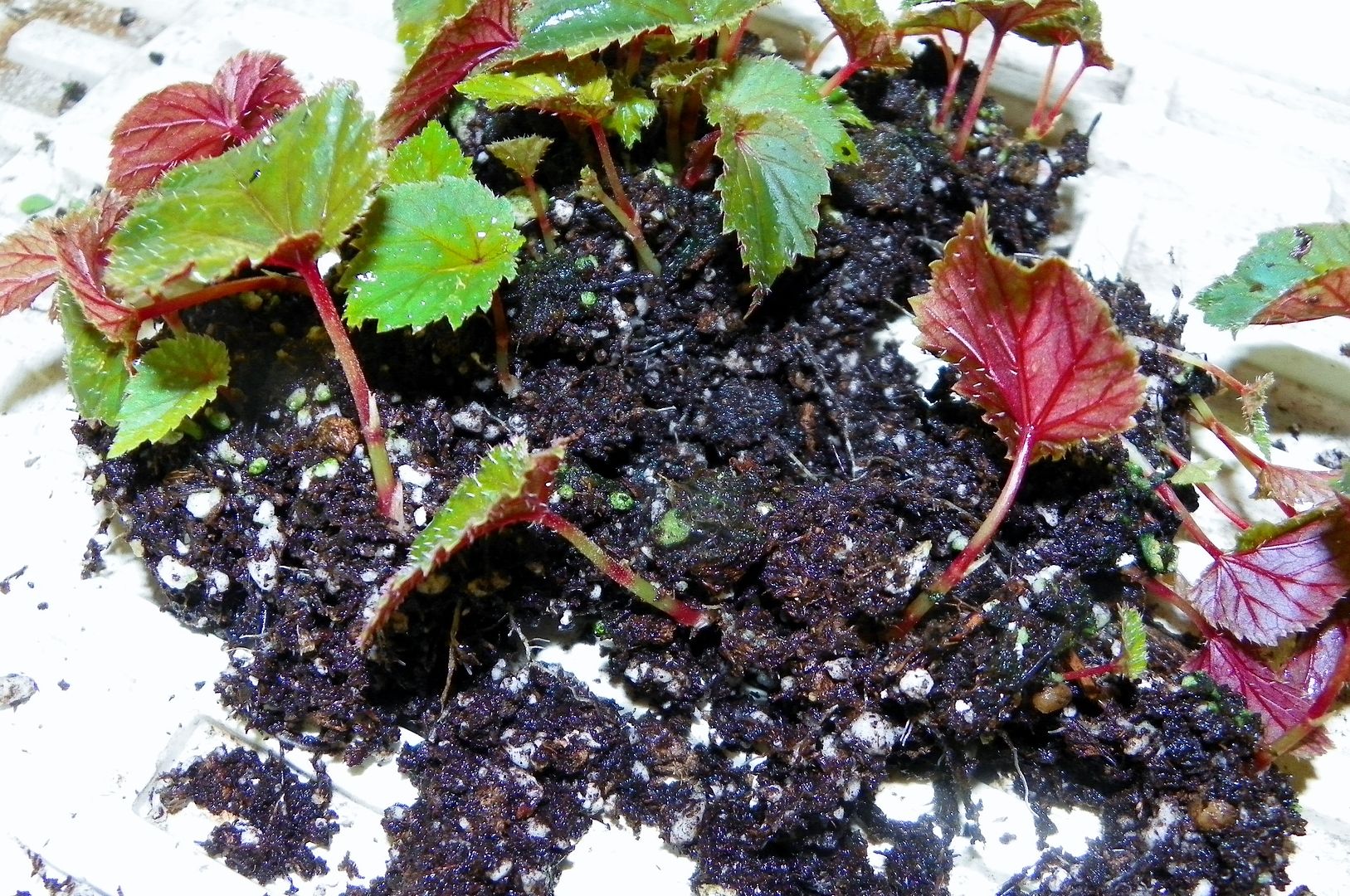

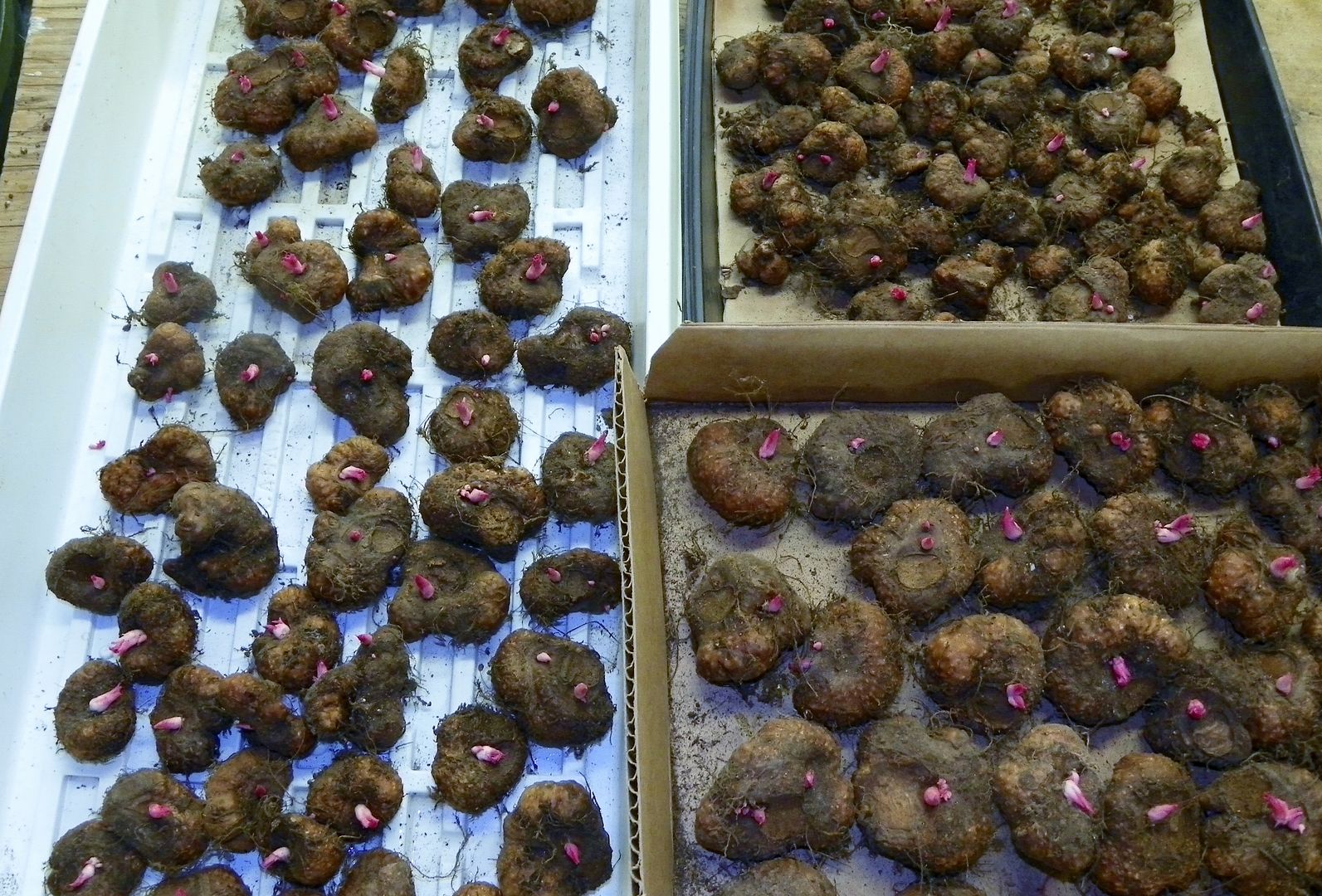
.jpg)

.jpg)
1 comment:
Hi Sharon, would this be the one they call Elephant ear plant? Do you keep any inside or do you keep them outside?You must be the queen of propagation wow, it sure produced alot of BABIES,lolAn older lady gave me two plants when I was ten, one a Christmas cactus and one she called Elephant ear...the elephant ear one must have died,but I thought it was soooo coool the Christmas cactus,well, I stupidly gave to my nephew after taking cutting, then realized on my 60th birthday had I kept the main plant I could have said it was 50 years old..sigh, oh well I have the pretty pink offspring...that will have to do,lol..Sam( Brenda C_)
Post a Comment